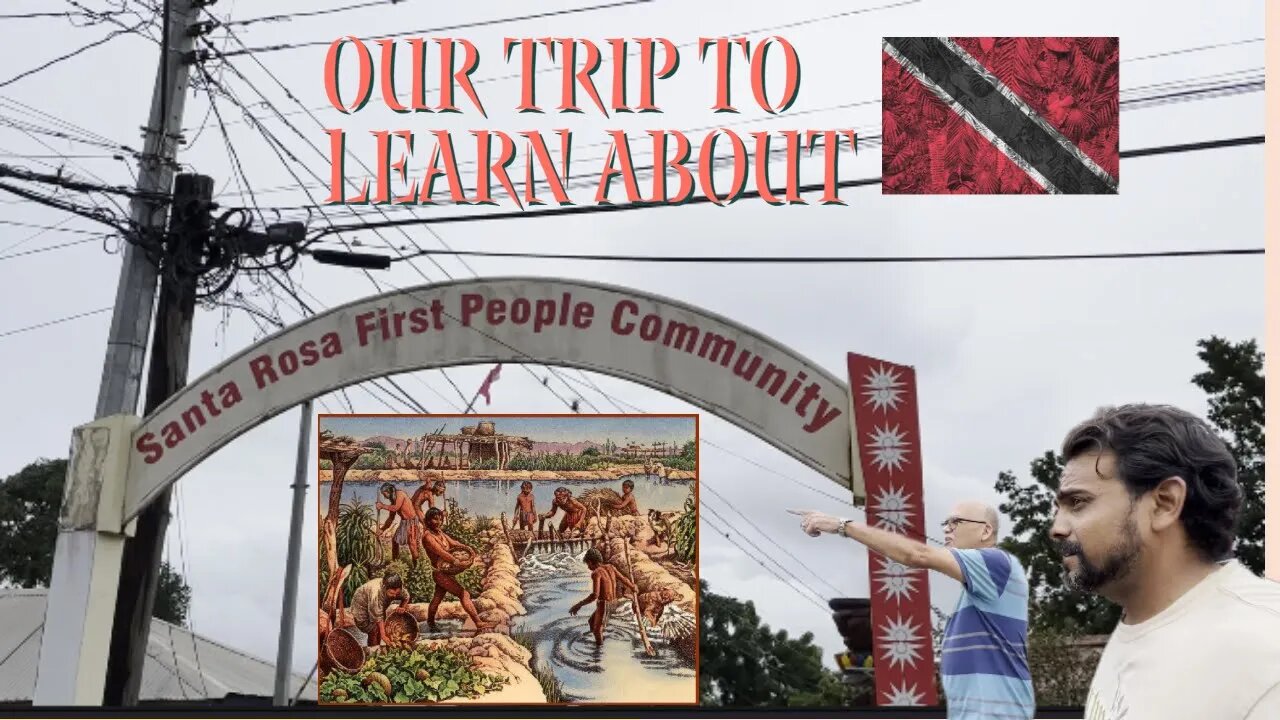Premium Only Content

TRINIDAD & TOBAGO Amerindian Indigenous Peoples Of Santa Rosa Arima Community
Join me as I take a trip with my Uncle and former Mayor of Arima Trinidad, Rep. Ashton Ford (Member of Parliament). We took a drive to visit the community of the Santa Rosa First People Of Arima:
Resource Links
https://www.crwflags.com/FOTW/flags/tt-srosa.html
https://www.facebook.com/santarosafirstpeoplescommunity/
https://www.youtube.com/watch?v=YXTsIGOlX7U&t=69s
https://www.youtube.com/watch?v=OCC3zgWVpYo
https://www.youtube.com/watch?v=Jn6nsMUlGkY
https://www.youtube.com/watch?v=K_iWyktk-yA
https://www.youtube.com/watch?v=qy-PFDifAxM
https://www.youtube.com/watch?v=yNHAn5zghUg
@TTTLiveOnline
If you wish to help support me in my channel growth any and all donations are greatly appreciated.
cashApp https://cash.app/$MaheshChooko108
Paypal: paypal.me/maheshchookolingo
Your Donations will go a long way to helping me develop my team, purchase better equipment, and improve editing quality. eventually, I will develop special packages for ongoing subscribers.
#native #arima #arawak #carib #caribbean #indigenous #amerindians #ashtonford #maheshchookolingo #chookolingo #trinidadandtobago #vlogger #education #travel #history
________________________________________________________________________
Source: Michael Ramsingh Trinidad #mikeonthemictt
https://www.youtube.com/watch?v=YXTsIGOlX7U&t=69s
Arima has always been regarded as the home of the Amerindians. Although it is difficult to find a 'pureblood' Amerindian within the district of Arima, or anywhere else in Trinidad, there is still evidence of their existence and the lingering impact of their cultural influence. Like many other regions in Trinidad, Arima, which emerged on the banks of what is known today as the Arima River, in fact, received its name from an Amerindian word that means water.
Situated in North-central Trinidad it has been, for more than a century, the most easterly settlement in the interior of Trinidad. Nestled at the foothills of the Northern Range it has always served as a hub of commercial activity and transportation for the neighboring areas, and for decades was the only gateway to the eastern seaboard.
Capuchin priests, who had ventured to this country to convert the Amerindians to Christianity as part of Spain's colonizing effort, conquered and claimed Arima in 1757, built a church, and established a mission in the town. Ironically, the church was dedicated to Rosa, an Amerindian girl from Lima, Peru, who had been canonized as Santa Rosa de Lima.
In the 1780s, under the new Governor José Maria Chacon, Amerindians were forcibly removed from their lands in the nearby Arouca and Tacarigua and relocated to Arima in order to distribute their arable land among the newly arrived French planters. During that period, Arima was governed by a Cabildo or (Town Council), which was presided over by Manuel Sorzano. Sorzano Street, which was named in his honor, still exists as a reminder of his rule. It is also the site of the Arima Town Hall, which houses the Mayor's office and is the official meeting place of the Council.
Today, Arima still remains a town of great historical significance and is the main hub for persons residing along the northeast area. Many activities such as the Arima Borough Day celebrations and the Feast of Santa Rosa are popular festivities in the area that attracts people from all over Trinidad and Tobago and the rest of the world. Still, Arima and its surrounding areas house some of the popular natural landscapes such as the Asa Wright Centre which is 12 km north of the town of Arima and which is one of the last natural tourist resorts in the country. Although the town of Arima continues to expand, it is hoped that the natural environment laying on the periphery would remain untouched and unspoiled.
_____________________________________________________________________
-
 8:16
8:16
MattMorseTV
12 hours ago $0.71 earnedTrump’s name just got CLEARED.
2.25K13 -
 16:43
16:43
GritsGG
12 hours agoThey Buffed This AR & It Slaps! Warzone Loadout!
40 -
 2:05:30
2:05:30
Side Scrollers Podcast
16 hours agoEveryone Hates MrBeast + FBI Spends $140k on Pokemon + All Todays News | Side Scrollers Live
90.5K5 -
 11:06
11:06
The Pascal Show
10 hours ago'THEY'RE GETTING DEATH THREATS!' Jake Haro's Lawyer Breaks Silence On Emmanuel Haro's Disappearance!
13 -
 LIVE
LIVE
Lofi Girl
2 years agoSynthwave Radio 🌌 - beats to chill/game to
279 watching -
 2:19:32
2:19:32
Badlands Media
1 day agoDEFCON ZERQ EP. 005
111K43 -
 2:35:23
2:35:23
FreshandFit
5 hours agoWhy Black Men Don't Date Black Women Debate
22.1K21 -
 2:03:42
2:03:42
Inverted World Live
9 hours agoBigfoot Corpse Coming to the NY State Fair | Ep. 94
94.8K21 -
 6:16:23
6:16:23
SpartakusLIVE
10 hours ago$1,000 Pistol Challenge || #1 ENTERTAINER of The EONS Eradicates BOREDOM
71.3K2 -
 2:33:37
2:33:37
TimcastIRL
7 hours agoTrump Orders Review of Smithsonian For Being Woke & Out of Control | Timcast IRL
170K55